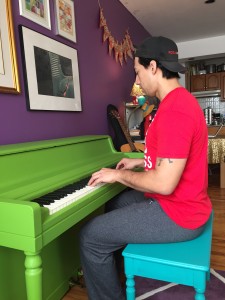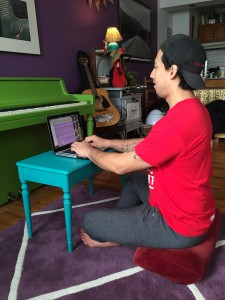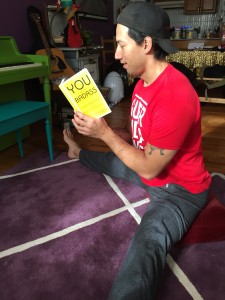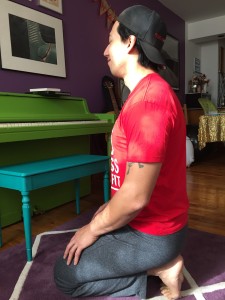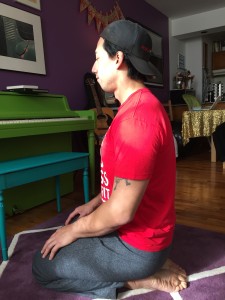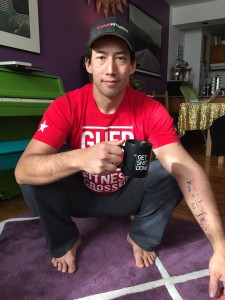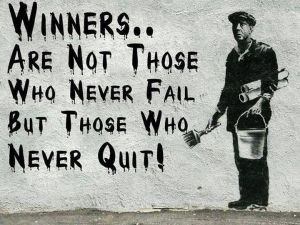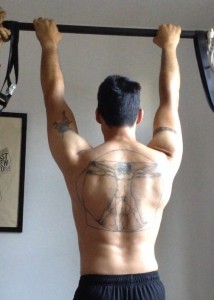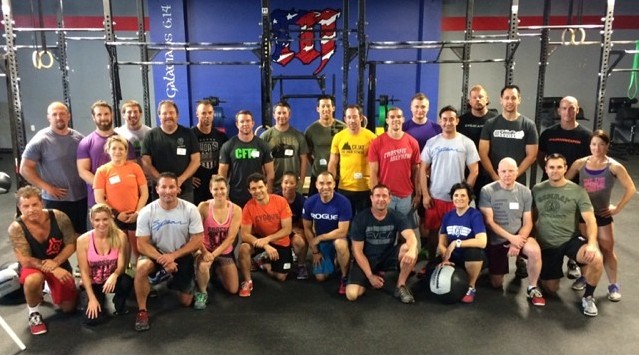So T-Nation, a well-known anti-CrossFit website, just posted an article called “A Doctor’s View of CrossFit.” Dr. Stuart McGill, a well-known back care specialist says some pretty ridiculous things about CrossFit.
In general, I believe Stuart McGill to be one of the better experts out there on back care. However, that doesn’t make him an expert on weightlifting, CrossFit, sports, strength and conditioning programming or really anything else other than back care. Thus his opinions on any of those topics don’t hold much weight.
Let’s examine some of his poor logic. He claims:
“While attending the CrossFit competition at the Arnold Classic, one thing really stood out: the lifting technique was just awful.
I did not see one competent lift. Not one! And things only got worse with each rep and set. (I will note that I have consulted before with some CrossFit gyms and there are some very competent lifters.)
No corrections from the coaches, only encouragement to continue lifting. The injured athletes went down to the medical tent where I saw very strange and, in my view, inappropriate chiropractic and physical therapy approaches being administered.”
My first problem with this statement is that he is at a competition and is dismayed by the poor form and the lack of people giving corrections. Correct me if I’m wrong, but I know of no sport where coaches shout to the athletes about form. Football players aren’t cautioned about how to tackle when they hit each other. Tennis coaches aren’t even allowed to talk to their athletes and batting coaches don’t caution their hitters to make sure not to over rotate.
McGill does not even understand sports. The point is to win, not to be safe. He is barking up the wrong tree, why doesn’t he write cautionary articles about back injuries in football, tennis, gymnastics, powerlifting or breakdancing? Because he likely wants to get his name out there and bashing CrossFit is the easiest way to do it.
He still misses the point and says the chiropractors and physical therapists were inappropriate. As if CrossFit was responsible for the quality of the third-party medical staff. He might as well complain that the price of hot dogs and beer was outrageous and parking was terrible.
He states that maintaining good form is important, which nobody argues with, not even CrossFitters. However, conflates what happens in a competition with what happens in training which are two different environments with two distinctly different goals.
Then McGill starts to talk about programming and even cites some studies that he performed on police and firefighters. He admits “the guys who trained more moderately were slightly less fit, but they were sufficiently fit, and more injury resilient.” A rather bold claim. By our definitions and standards in CrossFit, one could not be both fitter and more prone to injury. Our definition of fitness is based on work capacity and a significant injury would reduce your capacity and thus reduce your fitness. So we take precautions to make sure our athletes are safe and do not get injured–We coach them.
Second, he claims that these firefighters and police officers were “sufficiently fit.” As the physical challenges that befall firefighters and police officers are often unknowable, it is illogical to claim that one can ever be “sufficiently fit” for that job as insufficiency would result in catastrophic injury or death. Thus an arbitrary metric like a PT test would be of little value. The goal would be to maximize your fitness to the best of your ability to be prepared for the job.
Furthermore, McGill goes on to say this:
“We’re just publishing a study where we trained a group of firefighters with a program of substantial repetitions and weights but we did not coach form – the emphasis was on completing the reps. This will sound familiar to the CrossFit community.
In a second group we had a coach insist on good form for every rep, stopping when form broke, and continually correcting.”
Another unsubstantiated claim that CrossFitters do not coach movement. His “study” suggests that coached athletes do better than un-coached athletes. Nobody, not even CrossFitters, would disagree. We state quite clearly in CrossFit that performing functional movements with excellent form is the best way to prevent injury. Again McGill is just trying to be misleading to get some notoriety.
He goes on to make many claims about bad coaching being synonymous with CrossFit coaching which is just unfounded. There are bad coaches everywhere, yes even in CrossFit, but CrossFit certainly does not have the monopoly on bad coaching.
Lastly, he takes that classic dig at CrossFit for programming high rep Olympic Weightlifting. The claim that that is bad is so old and so unproven that it’s laughable that he is still making it. First, it contradicts something that McGill himself preaches: lower back endurance. He is a big advocate of stamina over absolute strength when it comes to protecting the lower back, i.e. doing more reps at lighter weight than low reps at heavier weight. Yet tries to compare the risk of snatching 135lbs for reps to the Olympic Lifters that do singles and doubles….at over 300lbs. Furthermore, we see Girovoy sport specialists do double Kettlebell Clean and Jerks for 10 minutes with two 32kg ketttlebells and score well over a hundred reps. Yet, nobody is complaining about that. Why because nobody would bother to click on your link if you put that on your Facebook page.
McGill claims the program is faulty, but time has shown that the program works. McGill conflates CrossFit competition with CrossFit for fitness and health and misunderstands the different goals. McGill is upset by the lack of good coaching. So is everyone. It’s not a CrossFit problem it’s a world problem. He’s not writing an article about how many fat nutritionists there are. He’s not writing about how prolonged sitting leads to more back problems and disfunction than CrossFit, because he wants attention. I used to respect him, but once he joined the haters at T-Nation he lost me. Using his title as “doctor” to sling arrows and make ridiculous accusations is just cheap.

